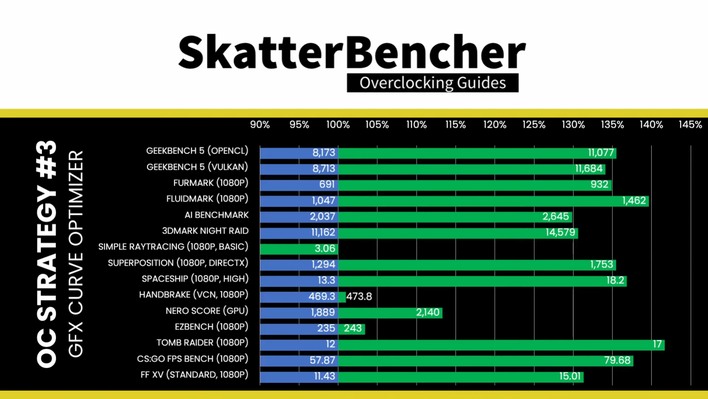Modern graphics processors have thousands upon thousands of shader processors, and that's because they're expected to run intense 3D games and do massively-parallel math. You
don't typically expect integrated graphics processors to do those things, so that's why they're much smaller, and they don't get any littler than the single-WGP GPU built into AMD's Ryzen 7000 CPUs.
Because these GPUs are so small, even a massive boost in clock rate won't help performance that much, so there's no point in overclocking them, right? Well, tell that to SkatterBencher, who just cranked the RDNA 2 IGP inside a Ryzen 9 7900 all the way from its stock 2.2 GHz to a full 3100 MHz. He did this by using the new GFX Curve Optimizer introduced by AMD in
the latest AGESA firmware revisions.
Did he see some incredible performance uplift? Well, it was actually pretty close to linear for most of the things he tested. Gains in the majority of applications ranged around 30 to 35%, with the greatest improvement being in Tomb Raider (2013). That game saw a whopping 41% performance uplift—perfect linear scaling—which is just not the kind of thing you usually see from overclocking anymore.
Of course, those huge gains still only resulted in a 5 FPS increase, taking the game from 12 FPS to 17 FPS in 1080p. That's still not exactly playable. Even the aged CS:GO was barely able to scrape 80 FPS on this micro GPU when overclocked; the stock settings take it close to 60. Whether Final Fantasy XV, 3DMark, or Superposition; none of the results are notable in an absolute sense, but the degree of performance gain is still impressive.
Skatterbencher says that AMD's integrated graphics are ironically quite a bit more pleasant to work with when overclocking compared to its discrete graphics. The
champion overclocker concludes the video with the acknowledgement that, despite the pointlessness of this overclock, it was still fun to do. That's really the point at the end of the day anyway, isn't it?


